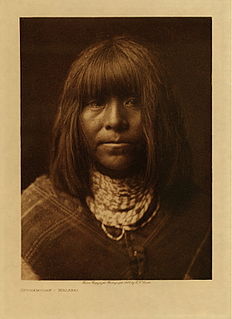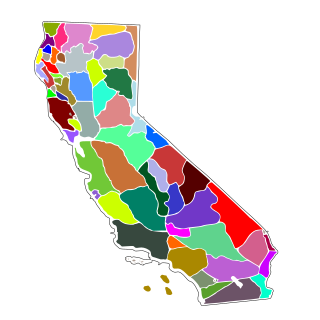| United States v. Santa Fe Pacific Railroad Co. | |
|---|---|
| Argued November 12–13, 1941 Decided December 8, 1941 | |
| Full case name | United States v. Santa Fe Pacific Railroad Company |
| Citations | 62 S. Ct. 248; 86 L. Ed. 260; 1941 U.S. LEXIS 1124 |
| Prior history | 114 F.2d 420 (9th Cir. 1940), cert. granted, 312 U.S. 675(1941) |
| Subsequent history | Rehearing denied, 314 U.S. 716(1942) |
| Holding | |
| Aboriginal title is extinguished by legislation only with a clear intention. | |
| Court membership | |
| |
| Case opinions | |
| Majority | Douglas, joined by unanimous |
| Laws applied | |
| Treaty of Guadalupe Hidalgo; 10 Stat. 308 (1854); 13 Stat. 541 (1865); 14 Stat. 292 (1866); 16 Stat. 291 (1870) | |
United States v. Santa Fe Pacific Railroad Co., 314 U.S. 339 (1941), is a United States Supreme Court case in which the Court held that the power of Congress to extinguish aboriginal title is plenary and nonjusticiable but that Congress was presumed not to do so absent a clear intention. [1] It is the leading precedent on the extinguishment of aboriginal title in the United States.

The Supreme Court of the United States is the highest court in the federal judiciary of the United States. Established pursuant to Article III of the U.S. Constitution in 1789, it has original jurisdiction over a narrow range of cases, including suits between two or more states and those involving ambassadors. It also has ultimate appellate jurisdiction over all federal court and state court cases that involve a point of federal constitutional or statutory law. The Court has the power of judicial review, the ability to invalidate a statute for violating a provision of the Constitution or an executive act for being unlawful. However, it may act only within the context of a case in an area of law over which it has jurisdiction. The court may decide cases having political overtones, but it has ruled that it does not have power to decide nonjusticiable political questions. Each year it agrees to hear about one hundred to one hundred fifty of the more than seven thousand cases that it is asked to review.

The United States was the first jurisdiction to acknowledge the common law doctrine of aboriginal title. Native American tribes and nations establish aboriginal title by actual, continuous, and exclusive use and occupancy for a "long time." Individuals may also establish aboriginal title, if their ancestors held title as individuals. Unlike other jurisdictions, the content of aboriginal title is not limited to historical or traditional land uses. Aboriginal title may not be alienated, except to the federal government or with the approval of Congress. Aboriginal title is distinct from the lands Native Americans own in fee simple and occupy under federal trust.
Contents
The suit was brought by the federal government, on behalf of the Hualapai against the Santa Fe Pacific Railroad. The Court held that the Hualapai's aboriginal title was not extinguished by (1) its lack of federal recognition or acknowledgment by treaty, statute, for formal government action; (2) the 1848 Treaty of Guadalupe Hidalgo (3) an 1854 federal statute creating the office of Surveyor General of New Mexico; (4) and 1865 statute creating the Colorado River Indian Reservation; (5) the 1866 federal land grant to the railroad; (6) an 1870 federal statute creating the office of Surveyor General of Arizona; or (7) the 1874 forcible removal of the Hualapai to the Colorado River Indian Reservation.

The Hualapai is a federally recognized Indian tribe in Arizona with over 2300 enrolled members. Approximately 1353 enrolled members reside on the Hualapai Indian reservation, which spans over three counties in Northern Arizona.

The Treaty of Guadalupe Hidalgo, officially titled the Treaty of Peace, Friendship, Limits and Settlement between the United States of America and the Mexican Republic, is the peace treaty signed on February 2, 1848, in the Villa de Guadalupe Hidalgo between the United States and Mexico that ended the Mexican–American War (1846–1848). The treaty came into force on July 4, 1848.
A land grant is a grant of land – held by a government to hold until the land it granted to a person. The United States historically gave out numerous land grants to people desiring farmland. The American Industrial Revolution was guided by many supportive acts of legislatures promoting commerce or transportation infrastructure development by private companies, such as the Cumberland Road turnpike, the Lehigh Canal, the Schuylkill Canal, and the many railroads that tied the young United States together.
However, the Court held that the 1881 creation of a reservation by executive order at the request of the Hualapai extinguished the tribe's aboriginal title outside of that reservation. The case distinguished aboriginal title in California from aboriginal title in the rest of the Mexican Cession and is frequently cited for its in-depth discussion of the test for the extinguishment of aboriginal title.

In the United States, an executive order is a directive issued by the President of the United States that manages operations of the federal government and has the force of law. The legal or constitutional basis for executive orders has multiple sources. Article Two of the United States Constitution gives the president broad executive and enforcement authority to use their discretion to determine how to enforce the law or to otherwise manage the resources and staff of the executive branch. The ability to make such orders is also based on express or implied Acts of Congress that delegate to the President some degree of discretionary power.

Aboriginal title in California refers to the aboriginal title land rights of the indigenous peoples of California. The state is unique in that no Native American tribe in California is the counterparty to a ratified federal treaty. Therefore, all the Indian reservations in the state were created by federal statute or executive order.

The Mexican Cession is the region in the modern-day southwestern United States that Mexico ceded to the U.S. in the Treaty of Guadalupe Hidalgo in 1848 after the Mexican–American War. This region had not been part of the areas east of the Rio Grande which had been claimed by the Republic of Texas, though the Texas annexation resolution two years earlier had not specified the southern and western boundary of the new State of Texas. The Mexican Cession was the third largest acquisition of territory in US history. The largest was the Louisiana Purchase, with some 827,000 sq. miles, followed by the acquisition of Alaska.





